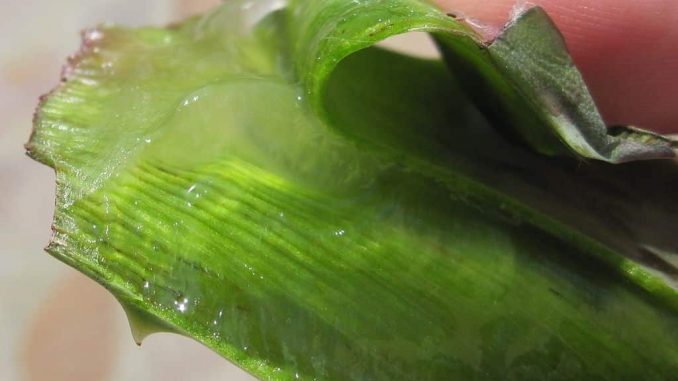
We all have those days when little aches and pains flare up beyond the comfort zone. If you’re tired of taking expensive pills and rubbing on synthetic creams, here are some plant remedies for dealing with pain. They’re effective, and you can grow them at home in your Costa Rican garden.
Aloe Vera
You would be surprised at how many ways you can use aloe for pain and swelling. The gelatin inside the leaf is used to alleviate painful skin problems such as burns, sunburn, insect bites, cuts and bruises, as well as treating sprains and strains, eczema, psoriasis, fungal infections and acne.
Its cool, soothing action gives instant relief to most minor injuries, and some folks have even chased away the aches and pains of arthritis and rheumatism by drinking aloe vera juice. And I can’t forget to mention how it also knocks out the painful discomfort of gastritis, ulcers, colitis, and hemorrhoids.
Headache? Try lying down with a piece of aloe gel on your forehead. In a few minutes you’ll find relief as the gel pulls out the excess heat from the head. If a family has a dozen aloe vera plants around the home, there’s always a supply of fresh leaves to treat those little emergencies that come up time to time.
Turmeric
Turmeric, or Curcuma longa, has wonderful painkilling and anti-inflammatory properties that make it a valuable alternative to conventional painkillers. The volatile oil fraction and the curcumoids of turmeric work together as an anti-inflammatory agent, getting to the cause of the pain. Clinical studies have shown that turmeric proved just as effective as cortisone and phenylbutazone in acute cases of pain and inflammation; patients were given two 250mg capsules of turmeric 3 times a day.
Make turmeric tea, or simply include plenty of turmeric in your daily diet: curry is one of the best ways to take turmeric. Combining turmeric with black pepper and coconut oil help make turmeric more available for your body.
Ginger
Ginger is another tuber from the tropics that’s a natural analgesic. It’s been used for millennia in Asia for treating painful joints and muscles.
Here’s an easy recipe that we’ve used for years with great results: Finely grate a ginger root. Add 20g of the grated root to 200ml of coconut oil in a small cooking pot with a lid. Now cook the mix on low heat, ideally on an electric hot plate, so the oil barely simmers. Heat for 2 hours to pull the ginger’s active ingredients into the coconut oil. Let it stand in the pot overnight. The next day, strain the mix and pour the oil into a dark bottle. It’s effective, smells good and helps to rejuvenate your skin.
When you have a serious injury, here’s a recipe with all three of these superstars to come to your rescue. Many years ago, I came up with this poultice recipe when I injured my knee from a fall. A poultice is an old herbalist term for applying a mix of herbs to a sore joint, neck and so forth.
I blended the gel of one aloe leaf with a small palm-sized fresh ginger root and a similar amount of fresh turmeric root without any water. Bingo! The results were fabulous. I was walking after 3 days of treating the knee by wrapping it with this mix and covering it with a plastic bag, then a towel, and finally a hot water bottle.
I did this in the morning, afternoon and evening each day. I also used it for a worn-out shoulder and a bone spur on my heal. Today, I have complete use of the joints thanks to these marvelous plants, and they all can be grown right around the home.
Tropical Anica
Here’s one more plant that’s found in many parts of Costa Rica, growing in pastures, coffee plantations and along roadsides. Tropical Anica, or Chaptalia nutans, is named after its northern cousin Arnica (Arnica Montana), since both offer pain relief. They belong to the Aster family, as does dandelion (Taraxacum officinale), which has some similarities – except that tropical arnica has purple flowers instead of yellow. It’s easy to find and can even be transplanted to your home herb garden, so you can have it close on hand when needed.
Although you can make a strong infusion of the leaves to soak painful muscles and joints, it’s better to make a tincture from the fresh leaves and flowers. Soak one handful of finely chopped arnica leaves in 250 mL of vodka or clear rum and store the concoction in a glass jar with a tight seal; shake the mixture once daily for 3 weeks.
Now strain off the liquid and store in a dark bottle. You can apply this tincture to affected areas for quick relief from pain and stiffness. According to most of the folklore on arnica, it should not to be used as a tea or any other internal use. Even so, some indigenous tribes do use the tea as a worm medicine and to treat insomnia.
Be well!
Via The Tico Times
